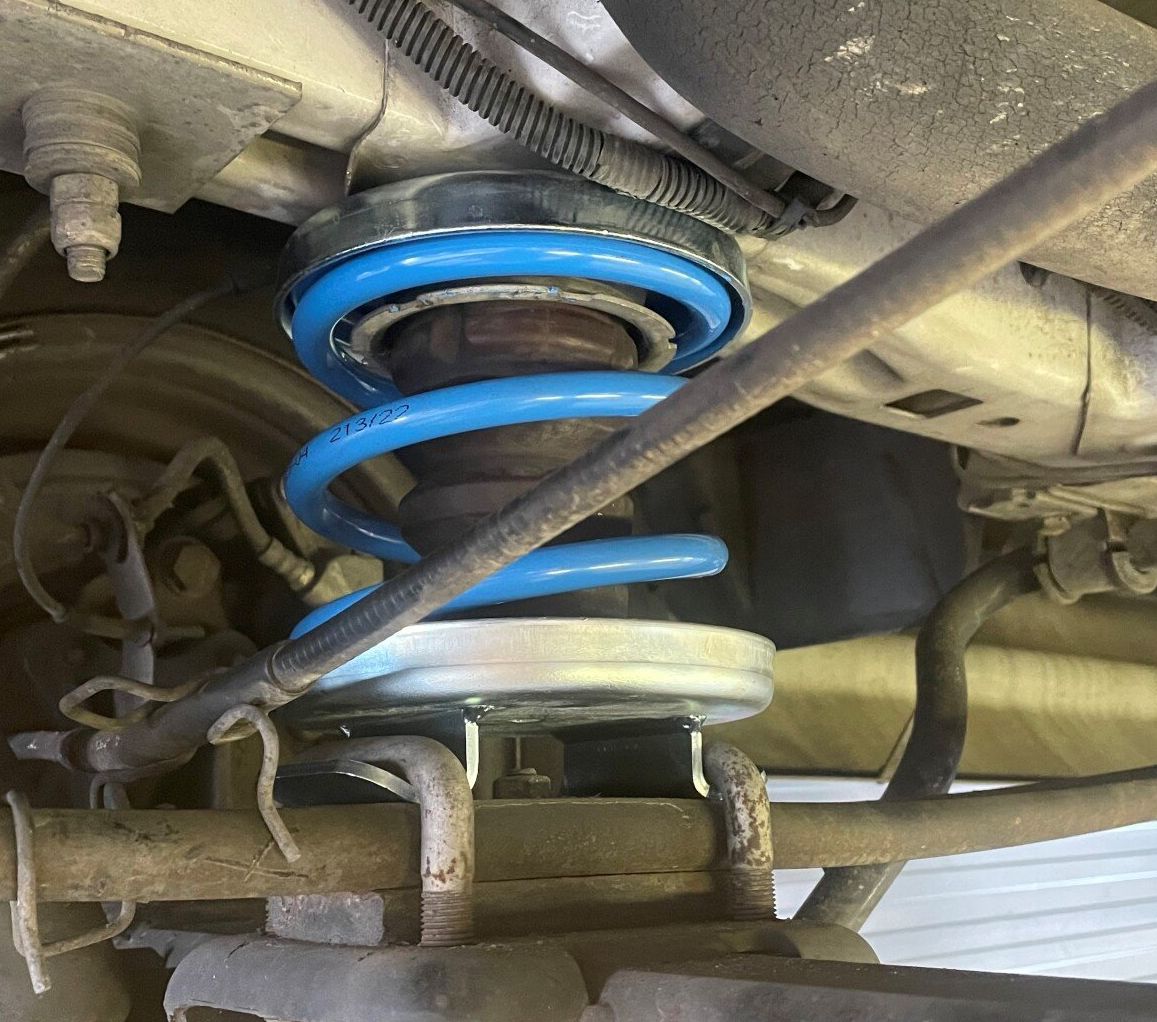Rear sag with camper builds, crosswind sway, front “dive”.
- Rear: helper springs for progressive load support.
- Front: reinforced coils if the camper is always heavy.
- Alternative: air suspension for adjustability or left/right correction.

Not sure which suspension upgrade fits your van or camper? This guide compares cost, ride quality, install time, and maintenance—plus an easy decision matrix and a quick measuring how-to.
Helper springs (e.g., MAD helper springs) are progressive add-on springs that engage under load.
Air suspension (add-on air bags or full air replacement) uses air springs with valves/compressor for adjustable ride height and spring rate.
Stronger (or longer) replacement coils that take the place of your OEM coil—often on the front axle(common on FWD or coil-strut fronts).
Rear sag with camper builds, crosswind sway, front “dive”.
FWD with long rear overhang; campers sag quickly at the rear.
Variable fleet payloads; tall camper conversions.
| Attribute | Helper Springs | Air Suspension | Reinforced Coils |
|---|---|---|---|
| How it works | Progressive add-on, engages under load | Air bags with valves/compressor | Fixed higher spring rate (replacement coils) |
| Empty ride | ✔️ Nearly stock | ✔️ Tunable | ◼︎ Stiffer |
| Loaded ride height | ✔️ Clearly improved | ✔️ Adjustable | ✔️ Structurally higher |
| Variable payload | ✔️ Excellent | ✔️ Excellent | ◼︎ Less ideal |
| Maintenance | Low | Medium/High | Low |
| Cost | $$ | $$$–$$$$ | $$ |
| Install time | ~30–75 min/axle (typical) | Longer/more complex | Moderate |
| Best use case | Cargo/work vans & mild camper sag | Leveling & side-to-side tuning | Constant heavy load (front) |
Indicative only; exact results depend on vehicle and kit.
Barely; they’re progressive and mainly engage under load.
Yes—often the best recipe for stability and comfort under load.
If you regularly adjust height or need left/right correction for uneven builds.
Most MAD helper springs are TÜV-approved; check the kit details for your vehicle and follow local regulations.
Choose reinforced coils (front) and/or helper springs (rear). Add air if you want fine tuning.
Torsion Beam (Twist Beam)
Semi-Trailing Arm with Coil Springs
Multi-Link Rear Suspension
Leaf Spring Suspension (Solid Axle)